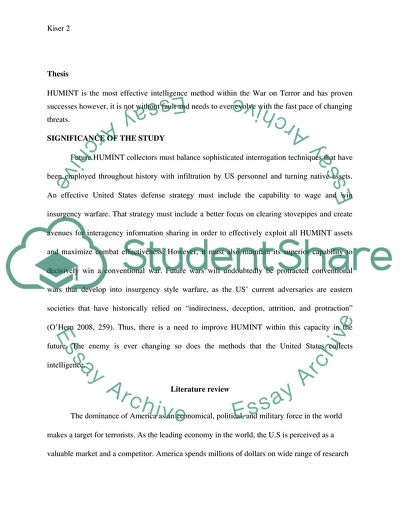Cite this document
(“HUMINT Intellegence Effectivness during the War on Terror Research Paper - 1”, n.d.)
HUMINT Intellegence Effectivness during the War on Terror Research Paper - 1. Retrieved from https://studentshare.org/military/1624551-humint-intellegence-effectivness-during-the-war-on-terror
HUMINT Intellegence Effectivness during the War on Terror Research Paper - 1. Retrieved from https://studentshare.org/military/1624551-humint-intellegence-effectivness-during-the-war-on-terror
(HUMINT Intellegence Effectivness During the War on Terror Research Paper - 1)
HUMINT Intellegence Effectivness During the War on Terror Research Paper - 1. https://studentshare.org/military/1624551-humint-intellegence-effectivness-during-the-war-on-terror.
HUMINT Intellegence Effectivness During the War on Terror Research Paper - 1. https://studentshare.org/military/1624551-humint-intellegence-effectivness-during-the-war-on-terror.
“HUMINT Intellegence Effectivness During the War on Terror Research Paper - 1”, n.d. https://studentshare.org/military/1624551-humint-intellegence-effectivness-during-the-war-on-terror.


